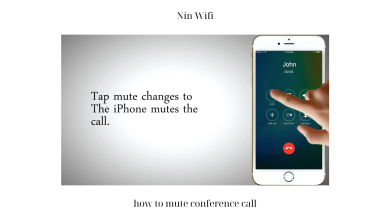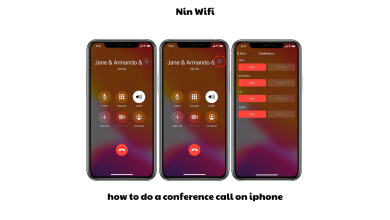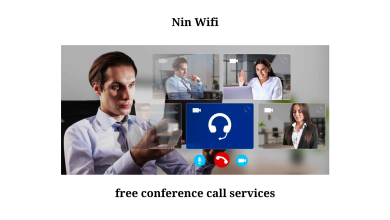Unveiling the Power of Conference Call for Proposals
Conference calls have become the cornerstone of modern business communication, enabling organizations to transcend geographical barriers and foster collaboration. In today’s fast-paced world, the ability to articulate ideas effectively through conference call proposals is paramount. Whether it’s pitching a groundbreaking project, sharing research findings, or advocating for a cause, crafting a compelling conference call proposal can make all the difference in securing a slot on the agenda. In this article, we delve into the intricacies of drafting conference call proposals, offering invaluable insights and strategies to enhance your chances of success.
Understanding the Anatomy of a Conference Call Proposal:

Before delving into the nitty-gritty of crafting a winning proposal, it’s essential to grasp the fundamental components that comprise a conference call proposal. A well-structured proposal typically includes the following elements:
- Title and Abstract:
- The title should succinctly encapsulate the essence of your proposal, piquing the interest of potential reviewers.
- The abstract provides a concise overview of the proposed topic, objectives, and anticipated outcomes, serving as a teaser to entice readers to delve deeper into the proposal.
- Introduction:
- This section sets the stage by introducing the context and significance of the proposed topic.
- Clearly articulate the objectives and intended audience to provide clarity and direction to reviewers.
- Background and Rationale:
- Offer a comprehensive overview of the existing literature, research gaps, or industry trends that justify the need for the proposed discussion.
- Highlight any relevant precedents or real-world examples to underscore the relevance and timeliness of the topic.
- Objectives and Expected Outcomes:
- Clearly outline the specific goals and objectives that the conference call aims to achieve.
- Identify the expected outcomes or deliverables, such as actionable insights, recommendations, or collaborative initiatives.
- Methodology or Approach:
- Detail the proposed approach or methodology that will be employed during the conference call.
- This may include the format of the call, presentation techniques, interactive elements, or any other relevant strategies to engage participants effectively.
- Anticipated Challenges and Mitigation Strategies:
- Acknowledge any potential challenges or obstacles that may arise during the conference call.
- Offer proactive mitigation strategies to address these challenges and ensure the smooth execution of the proposed discussion.
- Call to Action:
- Conclude the proposal with a compelling call to action, inviting reviewers to consider the significance of the proposed topic and its potential impact on the intended audience.
Crafting a Compelling Conference Call Proposal:

Now that we’ve dissected the key components of a conference call proposal, let’s explore some strategies for crafting a compelling submission that stands out from the crowd:
- Know Your Audience:
- Tailor your proposal to resonate with the interests and priorities of the target audience.
- Research the backgrounds, expertise, and preferences of potential reviewers to customize your approach accordingly.
- Clearly Define the Problem Statement:
- Articulate a clear and concise problem statement that encapsulates the crux of the proposed discussion.
- Emphasize the significance and relevance of addressing this problem to capture the attention of reviewers.
- Demonstrate Value and Innovation:
- Showcase the unique value proposition of your proposed topic, highlighting any innovative approaches, methodologies, or insights.
- Illustrate how your proposal fills a gap in existing knowledge or offers a fresh perspective on a relevant issue.
- Foster Engagement and Interaction:
- Incorporate interactive elements or discussion prompts to encourage active participation during the conference call.
- Leverage multimedia resources, such as slideshows, videos, or case studies, to enhance engagement and comprehension.
- Emphasize Feasibility and Practicality:
- Ensure that your proposal is feasible within the constraints of time, resources, and logistics.
- Provide a realistic timeline and budget estimate to demonstrate the practicality of executing the proposed discussion.
- Seek Feedback and Iteration:
- Solicit feedback from colleagues, mentors, or subject matter experts to refine and strengthen your proposal.
- Iterate on your proposal based on constructive criticism and insights gained from peer review.
Objectives and Expected Outcomes:

Clearly define the specific objectives that the conference call aims to achieve and the anticipated outcomes. Be precise and actionable in outlining what participants can expect to gain from the discussion. For example, if the goal is to explore best practices for remote team collaboration, you might specify objectives such as identifying key challenges, sharing successful strategies, and fostering cross-functional synergy. By articulating clear objectives and outcomes, you provide clarity and direction to reviewers, demonstrating the value proposition of your proposal.
Outline the proposed approach or methodology that will be employed during the conference call. This may include the format of the call (e.g., panel discussion, interactive workshop, Q&A session), presentation techniques, and any interactive elements or multimedia resources you plan to incorporate. Consider how you will structure the discussion to maximize engagement and participation from attendees. For instance, if you’re conducting a panel discussion, specify the lineup of speakers, discussion topics, and time allocation for audience questions. By detailing your methodology, you demonstrate careful planning and preparation, instilling confidence in reviewers regarding the feasibility and effectiveness of your proposal.
Conclusion:
Crafting a compelling conference call proposal requires a combination of strategic thinking, persuasive communication, and meticulous attention to detail. By following the guidelines outlined in this article and leveraging innovative approaches, you can enhance your chances of success and secure a coveted slot on the conference call agenda. Remember to tailor your proposal to the preferences and priorities of the target audience, demonstrate the unique value proposition of your topic, and foster engagement through interactive elements. With these strategies in mind, you’ll be well-equipped to unleash the power of conference call proposals and make a meaningful impact in your field.



